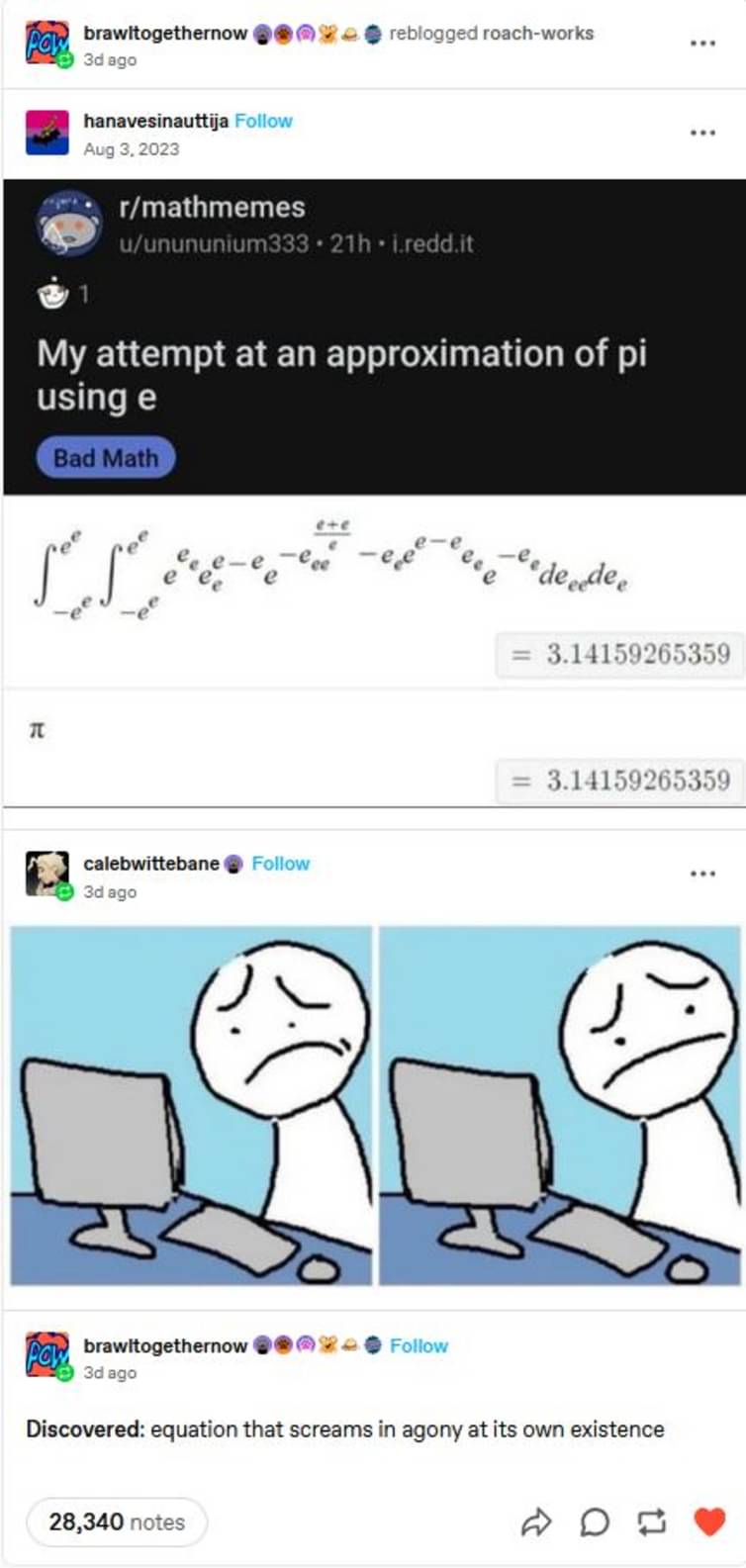this post was submitted on 17 Jul 2024
872 points (98.9% liked)
Science Memes
10348 readers
1593 users here now
Welcome to c/science_memes @ Mander.xyz!
A place for majestic STEMLORD peacocking, as well as memes about the realities of working in a lab.

Rules
- Don't throw mud. Behave like an intellectual and remember the human.
- Keep it rooted (on topic).
- No spam.
- Infographics welcome, get schooled.
Research Committee
Other Mander Communities
Science and Research
Biology and Life Sciences
- [email protected]
- [email protected]
- [email protected]
- [email protected]
- [email protected]
- [email protected]
- [email protected]
- [email protected]
- [email protected]
- [email protected]
- [email protected]
- [email protected]
- [email protected]
- [email protected]
- [email protected]
- [email protected]
- [email protected]
- [email protected]
- [email protected]
- [email protected]
- [email protected]
- [email protected]
- [email protected]
- [email protected]
- !reptiles and [email protected]
Physical Sciences
- [email protected]
- [email protected]
- [email protected]
- [email protected]
- [email protected]
- [email protected]
- [email protected]
- [email protected]
- [email protected]
Humanities and Social Sciences
Practical and Applied Sciences
- !exercise-and [email protected]
- [email protected]
- !self [email protected]
- [email protected]
- [email protected]
- [email protected]
Memes
Miscellaneous
founded 2 years ago
MODERATORS
you are viewing a single comment's thread
view the rest of the comments
view the rest of the comments

Wait... that's not an approximation at all! That equals exactly pi. If I understand the math correctly, it's effectively a formula for the area of a unit circle.
That should be an approximation. To get exactly pi the range of both integrals should be from minus infinity to infinity like this. It's the integral of the 2D Gaussian, which is fairly known.
Ah, you're right. I was thrown off by WolframAlpha saying the integral = π ≈ 3.1416 Both of those should be ≈
(x^2 + y^2)=1 is the equation for a unit circle, so it's definitely related. Just not quite how I thought.
Also the 2D gaussian integral is used to give an insight on why the 1D gaussian integral is sqrt of pi. Here is a video with cool visualization for anyone interested.